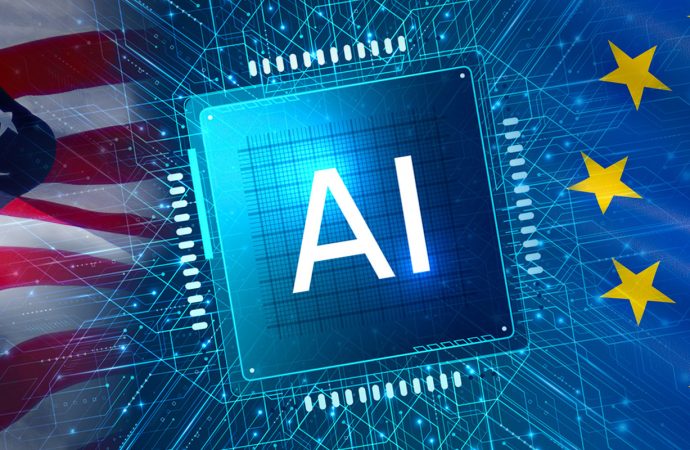Balancing Acts: Insights from OpenAI’s Controversy and the EU AI Legislation Introduction Hello, I’m Alexandra Jones, a legal scholar and an AI researcher. I have been studying the ethical and legal implications of artificial intelligence for over a decade. I have published several papers and books on the topic, and I have also consulted for various
Balancing Acts: Insights from OpenAI’s Controversy and the EU AI Legislation
Introduction
Hello, I’m Alexandra Jones, a legal scholar and an AI researcher. I have been studying the ethical and legal implications of artificial intelligence for over a decade. I have published several papers and books on the topic, and I have also consulted for various organizations and governments on AI policy and governance.
In this article, I will share with you some insights from two recent developments in the field of artificial intelligence: OpenAI’s controversial decision to limit access to its GPT-3 model and the EU’s proposed AI regulation. I will explain what these developments mean for the future of AI, and how they affect the balance between innovation, ethics, and law.
What is OpenAI and GPT-3?
OpenAI is a research organization that aims to create and promote artificial intelligence that can benefit humanity, without being constrained by profit or power. It was founded in 2015 by a group of prominent tech entrepreneurs and researchers, such as Elon Musk, Peter Thiel, and Sam Altman.
GPT-3 is one of the most advanced AI models that OpenAI has developed. It is a generative pre-trained transformer model that can produce natural language texts on almost any topic, given a few words or sentences as input. It uses a deep neural network with 175 billion parameters, which is more than 10 times the size of the previous state-of-the-art model.
GPT-3 is capable of generating coherent and diverse texts, such as stories, essays, summaries, translations, conversations, and even computer code. It can also answer questions, perform calculations, and mimic the style and tone of different authors. It is widely considered as a breakthrough in natural language processing and a milestone in artificial intelligence.
Why did OpenAI limit access to GPT-3?
Despite its impressive capabilities, GPT-3 also has some limitations and risks. For example, it can produce inaccurate, biased, or harmful texts, such as fake news, hate speech, or plagiarism. It can also be misused or abused by malicious actors, such as hackers, scammers, or propagandists. Moreover, it can pose challenges to the existing legal and ethical frameworks, such as intellectual property, privacy, or accountability.
To address these issues, OpenAI decided to limit access to GPT-3 and its successors. It did not release the full model or the training data to the public, but only offered a restricted and monitored API service to selected partners and researchers. It also implemented a set of policies and safeguards, such as terms of use, code of conduct, and review process, to ensure that the users of GPT-3 comply with the ethical and social standards of OpenAI.
OpenAI’s decision to limit access to GPT-3 sparked a lot of debate and controversy in the AI community and beyond. Some praised it as a responsible and prudent move, while others criticized it as a hypocritical and monopolistic one. Some argued that it was necessary to prevent the misuse and abuse of GPT-3, while others claimed that it was detrimental to the innovation and democratization of AI.
What is the EU’s proposed AI regulation?
The EU is one of the leading regions in the world that is actively developing and implementing a comprehensive and coherent framework for the governance of artificial intelligence. In April 2021, the European Commission, the executive branch of the EU, proposed a draft regulation on artificial intelligence, which aims to foster the development and use of trustworthy and human-centric AI in the EU.
The proposed regulation defines artificial intelligence as “software that is developed with one or more of the techniques and approaches listed in Annex I and can, for a given set of human-defined objectives, generate outputs such as content, predictions, recommendations, or decisions influencing the environments they interact with”. The techniques and approaches listed in Annex I include machine learning, logic and knowledge-based approaches, statistical approaches, and search and optimization methods.
The proposed regulation classifies AI systems into four categories, based on their potential impact on the rights and safety of people and the environment: unacceptable risk, high risk, limited risk, and minimal risk. The regulation prohibits the development, deployment, and use of AI systems that pose an unacceptable risk, such as those that manipulate human behavior, exploit vulnerabilities, or cause social scoring. The regulation imposes strict obligations and requirements on the providers and users of AI systems that pose a high risk, such as those that affect critical infrastructure, education, employment, or law enforcement. The regulation requires the providers of AI systems that pose a limited risk, such as those that generate or manipulate content, to inform and warn the users about the AI involvement. The regulation does not impose any specific obligations on the providers and users of AI systems that pose a minimal risk, such as those that are used for entertainment or personal purposes.
The proposed regulation also establishes a governance structure and a coordination mechanism for the oversight and enforcement of the AI rules in the EU. It creates a European Artificial Intelligence Board, composed of representatives from the member states and the European Commission, to provide guidance and advice on the implementation and interpretation of the regulation. It also designates national competent authorities and notified bodies to monitor and verify the compliance of AI systems with the regulation. It also sets out the administrative and judicial remedies and sanctions for the breaches of the regulation.
The proposed regulation is a landmark initiative that aims to create a single market and a level playing field for AI in the EU. It also aims to ensure that AI is developed and used in a manner that respects the fundamental rights and values of the EU, such as human dignity, democracy, and the rule of law. It also aims to foster the trust and confidence of the public and the stakeholders in AI, and to enhance the competitiveness and innovation of the EU in the global AI landscape.
How do OpenAI’s decision and the EU’s regulation affect the balance between innovation, ethics, and law?
OpenAI’s decision to limit access to GPT-3 and the EU’s proposed regulation on AI are two examples of how the ethical and legal aspects of artificial intelligence are becoming more prominent and challenging in the current and future scenarios. They both reflect the need and the difficulty of finding a balance between innovation, ethics, and law in the development and use of AI.
On the one hand, innovation is the driving force and the goal of AI. It is the process and the outcome of creating new and better AI systems that can solve problems, generate value, and improve the quality of life. Innovation is essential for the advancement and the benefit of humanity, and it should be encouraged and supported by the ethical and legal frameworks.

Image by: https://truegazette.com/
On the other hand, ethics and law are the constraints and the guides of AI. They are the principles and the rules that define the boundaries, the standards, and the responsibilities of AI. Ethics and law are necessary for the protection and the respect of the rights and interests of individuals, groups, and society, and they should be enforced and complied with by the innovation processes and outcomes.
Finding a balance between innovation, ethics, and law is not an easy task, as they often involve trade-offs, conflicts, and uncertainties. For example, limiting access to GPT-3 may reduce the risks of misuse and abuse, but it may also hinder the opportunities of research and development. Similarly, regulating AI may increase the trust and the safety of AI, but it may also impose costs and burdens on the providers and users of AI. Moreover, the balance between innovation, ethics, and law may vary depending on the context, the perspective, and the values of the stakeholders involved.
Therefore, finding a balance between innovation, ethics, and law requires a continuous and collaborative effort from all the actors and sectors involved in the AI ecosystem, such as researchers, developers, providers, users, regulators, policymakers, civil society, and the public. It also requires a holistic and adaptive approach that considers the technical, social, economic, and legal dimensions of AI, and that balances the benefits and the risks, the opportunities and the challenges, and the rights and the responsibilities of AI.
Conclusion
In this article, I have shared with you some insights from OpenAI’s controversial decision to limit access to its GPT-3 model and the EU’s proposed AI regulation. I have explained what these developments mean for the future of AI, and how they affect the balance between innovation, ethics, and law.

















Leave a Comment
Your email address will not be published. Required fields are marked with *